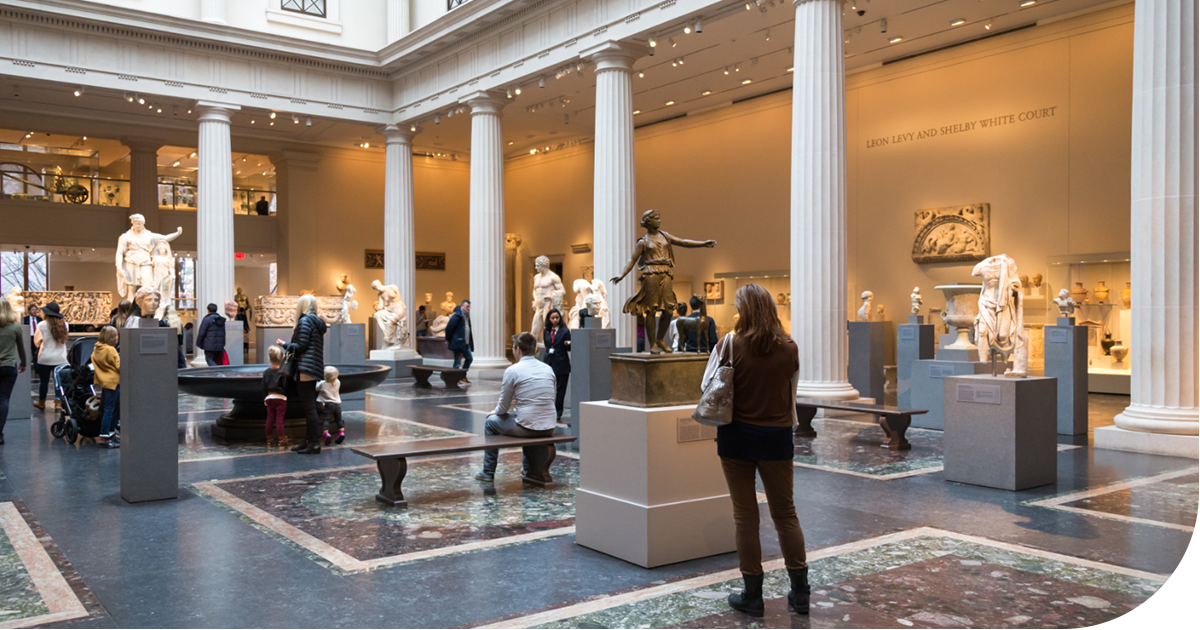Creating an accessible museum experience is not just about compliance—it's about welcoming everyone into a space of learning, beauty and community. Here's a list to help ensure your museum is accessible, combining knowledge with a welcoming approach.
Physical Access
- Entry and Exit: Ensure no barriers at the entrance and exit. This includes ramps for wheelchairs and strollers, wide doors, and automatic doors or doors that can be easily opened.
- Elevators and Lifts: Reliable elevators or lifts are essential for multi-level museums. They should be spacious enough to accommodate wheelchairs and have controls within reach.
- Seating: Provide ample seating throughout the museum, especially in galleries, allowing visitors to rest as needed.
Sensory Accessibility
- Visual Aids: Offer materials in large print and braille for visitors who are blind or have low vision. Consider having magnifiers available and ensure exhibits are well-lit.
- Audio Guides: Provide audio guides that include descriptions of visual elements for those who are blind or have low vision. Ensure these are available in multiple languages if possible.
- Quiet Spaces: Designate quiet areas or times for visitors sensitive to sensory overload, such as those with autism.
Digital Accessibility
- Website: Ensure your museum’s website is accessible by following the Web Content Accessibility Guidelines (WCAG). This includes alternative text for images, keyboard navigation and accessible online ticket purchasing.
- Apps and Interactive Displays: If your museum uses apps or interactive displays, ensure these are designed with accessibility in mind. This includes screen reader compatibility, simple navigation, and alternative input methods for users with limited mobility.
Staff Training and Awareness
- Training: Regularly train staff and volunteers on accessibility issues and how to assist visitors with disabilities. This includes understanding how to communicate effectively and respectfully.
- Sign Language: Offer tours or support in sign language or have a plan for accessing sign language interpretation services when needed.
Inclusive Programming
- Special Tours: Offer tours designed for visitors with specific needs, such as tactile tours for visitors who are blind or have low vision or sign language tours for those who are deaf or hard of hearing.
- Events: When planning events, consider accessibility in every aspect, from physical access to programming that includes all abilities.
Feedback and Improvement
- Feedback Mechanisms: Provide easy ways for visitors to give feedback on accessibility. Take this feedback seriously and use it to make continuous improvements.
Remember, accessibility is an ongoing commitment to inclusivity. By following these recommendations, you can move your museums closer to ensuring that art, history and culture are accessible and enjoyable for everyone.
For More Information:
- The Art of Access: A Practical Guide for Museum Accessibility by Heather Pressman and Danielle Schulz
- Maintaining Accessibility in Museums from the U.S. Department of Justice, Civil Rights Division, Disability Rights Section
- From the National Endowment for the Arts
- Accessibility Toolkit for Museum Digital Engagement from the Association of Science & Technology Centers (ASTC)

